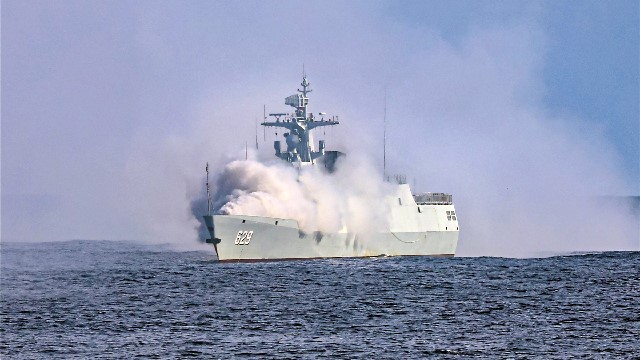For over 4,000 years, from the Chinese perspective, the Silk Road Spirit was one of “peace and cooperation, openness and inclusiveness, mutual learning and mutual benefit” that aided in the development of countries along the ancient Silk Road. The economic land bridge extended from Eastern China into Europe and Western Russia. The ancient maritime section of the Silk Route, often referred to as the spice network, connected Chinese commerce with the Indian subcontinent, Arabian Peninsula, Egypt, and Europe by sea. The 21st century version of the ancient Silk Route, Yīdài yīlù chàngyì (一带一路”倡议), is known collectively today as the Belt and Road Initiative (BRI). It is composed of six economic corridors; five of which are land-based. The newest, a sixth corridor, is a maritime strategy designed to create a modern global transport network from China’s coastline to the Mediterranean Sea states.
China’s shift from a solely continental-based approach to a dual sea-based strategy utilizing its modernized, blue water navy to secure trade routes has raised national security concerns among nation-states from the Indo-Pacific to Western Europe and the United States. China’s BRI spans 80 nations and covers 2/3 of the world’s population. According to Jonathan Hillman, writing in a CSIS Brief, Chinese investments are approaching $1 trillion, making the BRI seven times larger than what the US spent under the post-WWII Marshall Plan. The Initiative, he says, is “breathtakingly ambiguous” with no official definition of what qualifies as a project.
Touted by Beijing merely as an economic initiative supporting “connectiveness” and “mutually beneficial cooperation,” there are veiled overtones of a new, developing Sinocentric maritime environment that presents a geopolitical security threat to states located along the yī chuàn zhēnzhū or “String of Pearls” (一串珍珠) countries. To understand the causal logic behind China’s current commercial maritime strategy, one needs to examine where the country is shifting its resources and what it may indicate in terms of Beijing’s long-term, blue water, military power projection. Perhaps most revealing are the underlying holes in the current trade strategy that bely a more substantive threat to the rules-based world order.
When China reopened to the West in the 1980’s, it revitalized and expanded its maritime trade routes. By 2008 Chinese naval leaders began urging the CCP leadership in Beijing to establish overseas naval bases under the guise of supporting its counter-piracy operations along the African coastline. Shortly after Xi Jinping assumed power in March 2013, Chinese Premier Li Keqiang spoke about China’s desire to orient a new trade corridor towards the ASEAN states to “create propellers for hinterland development.” Public statements now are couched in terms of economic modernization, peaceful cooperation, and joint interests. When President Xi Jinping announced the start of the BRI, he declared that it is “all the more important for us to carry on the Silk Road spirit in face of the weak recovery of the global economy, and complex international and regional situations.” Xi was not transparent about what the Chinese government considered “complex,” what constituted a “situation,” or how China planned to impact the global economy. What is inferred from the summation of his speech is that Beijing views the great wall of water composing the seas near China as a strategic opportunity to reduce US influence and prestige in Asia.
The People’s Liberation Army Navy’s (PLAN) core pillar of strength today is a sea-oriented, economic strategy designed as an extension of China’s long-range power projection as well as a natural expansion of its overseas trade policy.
Of the 3,700 major ports worldwide, 2,000 of which are located on the Maritime Silk Road, China only is interested in 17-18 of them. Each of these is capable of handling large, military ships. The world is fast approaching a period where the various forms of Chinese overseas interactions, both civilian and military, are no longer confined to the littoral waters around Taiwan or the South China Sea. When President Xi speaks in terms of a Chinese tiānxià (天下) he means far more than just “empire;” he is merging the concept of the modern nation-state and the civilized world into one. It is a world order viewed from a Chinese perspective where the “middle kingdom” presides over the center. Tiānxià is a soft power approach based on the symbolic recognition of the charismatic authority of the Chinese emperor as prerequisite to engage in the exchange of goods. There are nascent indicators of such a transformation today in China’s geopolitical, great power strategy that are ingrained in the reconstruction of older ordering principles which is rooted in the history of China’s ancient Silk Road.
Daria Novak served in the U.S. State Department
Photo: Photo taken on April 8, 2022 shows a frigate maneuvers in full speed during a combat training exercise somewhere in the South China Sea staged by a frigate flotilla with the navy under the PLA Southern Theatre Command in early April, 2022.(eng.chinamil.com.cn/Photo by Zhang Bin)
